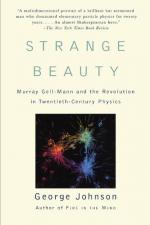|
This section contains 616 words (approx. 3 pages at 300 words per page) |

|
1929-
American Physicist
Following World War II, a new level of governmental support for high energy physics research in the United States and Europe led to the discovery of numerous new elementary particles, most being substantially heavier than the electron and many heavier than the proton. Murray Gell-Mann played a key role in bringing order to this "zoo" of newly discovered particles, first through the introduction of a new quantum number called "strangeness" and then through a unification named (partly in jest) the "eightfold way," which led to the "quark" model of the more massive subatomic particles. In his later career, Gell-Mann played an essential role in interesting physicists in a new interdisciplinary field devoted to the study of complex phenomena and in setting up the Santa Fe Institute as a center for research in this area.
 Murray Gell-Mann. (AP/Wide World Photos. Reproduced with permission...
Murray Gell-Mann. (AP/Wide World Photos. Reproduced with permission...|
This section contains 616 words (approx. 3 pages at 300 words per page) |

|


